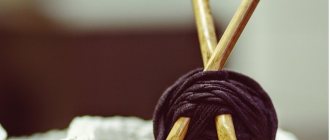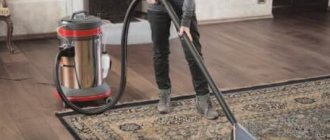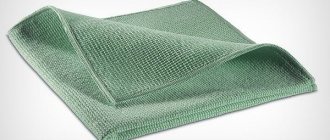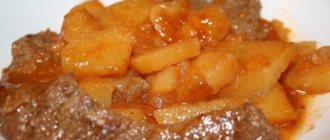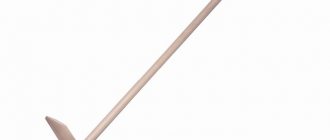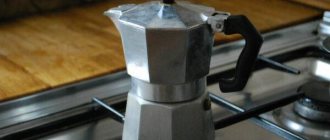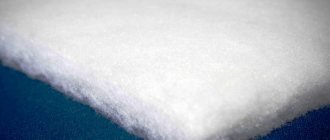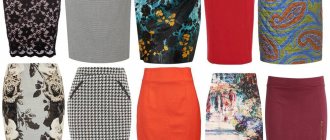The birth of a child is a very exciting moment in the life of every family. Of course, it is better to prepare in advance for an important event. Currently, there is a huge selection of different children's furniture. When choosing things for a newborn, it is recommended to pay special attention to the sides of the crib. They are gaining more and more popularity among new parents. It is also often called a bumper or protection. In this article we will look at the different types of bumpers for a baby crib, and also dwell in detail on those aspects that you need to pay attention to when choosing a product.
Why do you need bumpers in a crib?
The main purpose of crib bumpers is to protect the baby from injury. Young parents should understand that for the first couple of weeks the baby lies almost motionless in his bed, but before you know it, he will begin to crawl and roll around his crib, and will constantly beat his delicate arms and legs against the hard walls and headboard of the bed.
It’s better to sew a crib protector with your own hands, putting all your mother’s care and love into the product.
For protection, special soft sides are sewn - in the form of pillows, a continuous soft strip of fabric, or in the form of unusual shapes and even animals. They are attached from the inside around the entire perimeter of the children's bed and reliably protect the child from pain and bruises, and the sleeping place will become even more comfortable and beautiful!
Classic protective edges vary in height.
The sides also protect the child from drafts, which is also extremely important, because the baby’s immunity is still very weak, and the baby is susceptible to illness from the slightest draft. Dense soft fabric also provides partial sound insulation, and the crib will be calm and quiet, the child will be calm and will be less capricious.
Low sides (their height ranges from ⅓ to ⅔ of the total height of the crib) do not limit the baby’s view and look very neat.
The sides are made from natural cotton fabric or other soft and natural material suitable for the child, for example, from a flannel. Sintepon or holofiber is used as a filler, but it is not recommended to use foam rubber, as it does not dry well and can become a breeding ground for fungus.
Low protection is relevant for babies who have not yet tried to get up in a crib.
What size of sides should I choose?
For babies under 5 months, choose bumpers no more than 30 cm in height
This will allow you to see the baby without looking into the crib every time.
But after the child begins to sit down and try to stand up, the bumpers should be higher. So that the child cannot stand on them and try to get out of a crib of any size.
The length of the side for a standard bed 120*60 will be 360cm.
Types of bumpers for newborns
Before sewing the sides into the crib, you should choose its type and shape. They may differ in size, height, and complexity of manufacture. And most importantly, they look different, so choose according to your personal taste.
When a child begins to climb and inevitably fall, it is more appropriate to use a reliable high protection.
Snake
An excellent choice for you if you are comfortable with thread and needle. A snake is a long round roller that is laid out at the bottom along the perimeter of the bed and looks like a funny toy.
You can make several rollers of different sizes and colors to create a composition, then they will be easier to wash.
The snake can be made in the form of just a bright multi-colored roller made of beautiful fabric, or in the form of an animal: a funny long dachshund, a family of cats, fish or a boa constrictor from a cartoon. The main thing is to show your imagination!
Particularly interesting are the bumpers in the shape of animal pillows, houses or cars.
Cloudy
Clouds are a very popular form of sides among mothers. These are essentially bumpers in the form of small pillows in a crib for a newborn baby, but each pillow is shaped like a cloud. It is better to make such bumpers from fabric of a delicate shade, combining white with blue, pink, and cream. These clouds look incredibly delicate and are very easy to sew! You don't even need a pattern, just cut out a cloud from the fabric - the bottom is flat and the top is bumpy, and you're done!
Protective pillows for a baby crib are one of the affordable and simple ways to create the most comfortable conditions for your baby.
The clouds can be the same shape and size, or they can be different. It's up to your discretion. More often they make the same shape, cutting out all the clouds from one template, but they take different fabric and alternate, for example, white and blue clouds. It turns out very beautiful.
Prevents the child from being injured from contact with hard parts of the crib while awake and sleeping.
Pigtail
The name speaks for itself: the braided side looks like a large soft braid woven from three thick fabric rolls. It is easy to do, especially if you have a sewing machine. You just need to sew three long sausages from soft fabric, and it is better that the fabric stretches a little, then it will be easier to weave a braid. Fill the “sausages” with soft filling, sew at the base and tie a pigtail, and also secure the other end with threads.
They create a cozy and comfortable atmosphere for growth and development.
For a braid, you can use fabric of three related but different shades so that they combine harmoniously with each other. For example, soft turquoise, sky blue and cream. One of them may have a small pattern, but not all of them, otherwise it will turn out too colorful.
Modern young mothers strive to find for their babies not only high-quality and reliable, but also impressive-looking bumpers.
Animals
Another type of pillow is animals. There is room for your imagination to run wild! And making them with your own hands is much easier than you might think at first glance. The easiest way is to make square, rectangular or round pads, and make an animal out of them using fabric applique - to create the original face of a cat, dog, or owl.
When choosing sides, pay attention to the fastenings: elegant ties can come undone, and the baby can get confused in the ribbons, so the simpler and more reliable the fastening, the better for the baby.
You can make ears or horns, even paws. But you should not use decorative elements made of plastic and other hard materials: sew on eyes, nose and other details only from fabric, because the side must be safe, and any hard parts can injure the baby.
Borders for a newborn's bed are not only a way to protect the baby from shocks and drafts, but also an excellent option for useful decor for a child's room.
Choosing fabric for sides
Not only the filler affects the quality characteristics of the baby crib bumpers, but also the fabric from which they are made. The main qualities for the fabric that will go on the sides of the crib are its naturalness and density. They choose only environmentally friendly fabrics that have the ability to “breathe”.
No matter how good the fabric made from synthetic fibers is, it will never compare with natural ones. Therefore, you should choose any fabric based on cotton. Flannel, linen, calico, and chintz are perfect for sewing borders.
Important! Before cutting, the fabric must be washed and ironed well.
How to sew bumpers into a crib with your own hands
Once you have decided what your border will look like, choose the fabric. It should not only be beautiful and suitable in style, but most importantly, it should be safe, soft and pleasant for the child. Synthetic fabrics lead to allergies, irritation of the child’s skin, fungus develops on them, and other troubles. So the material must be exclusively natural and high quality, this is the main requirement. The following materials are suitable:
- Satin;
- Cotton;
- Plush;
- Bike;
- Calico;
- Ranfors;
- Chintz;
- Bamboo.
Modern fabrics and a wide range of different designed crib bumpers make it possible to choose the ideal option for any interior.
Be sure to touch the fabric, make sure of its natural composition, pay attention to the threads, their strength and weave.
As for the filler, there are several options:
- Sintepon is the most inexpensive, accessible and widespread material for children's toys, handicrafts and pillows. It is sold at any fabric store and is perfect for making borders.
- Holofiber is a more modern material, similar to padding polyester. It is more expensive, but its quality is also higher: the product will dry instantly, is completely non-toxic and safe for children, holds its shape perfectly and is highly durable.
- Periotec is another new material that is being used to make a variety of soft goods. It is also similar to padding polyester, but much more expensive and better in quality. Perfectly keeps its shape after washing, does not wrinkle, does not deform. Hypoallergenic, suitable even for sick children prone to allergies and irritations.
The best thing for a child is natural.
This rule also applies to crib bumpers. When you have selected the fabric and filling, you should choose a pattern. There are many ready-made patterns and diagrams on the Internet, but in fact, you can make the bumpers for a baby crib with your own hands, without a ready-made pattern, but on your own. Simply decide what shape the border will be, draw the shape on a large piece of paper and cut it out. That's all! You have a blank that you will need to trace on the fabric, cut out, sew the halves together and stuff with filler.
Pattern for a baby pillow in the shape of a cloud.
It is more important to choose the right size. Determine it yourself. Take a centimeter and measure the height of the side: the product does not have to reach the very top of the sides of the bed, it can only reach half, the main thing is that the baby does not hit. Measure the desired length around the perimeter of the crib. You have received the right size.
Sewing protective bumpers for a newborn's crib is often done by expectant mothers, their close relatives or friends.
Multiply the resulting amount by two, since the sides will be made of two halves. And if you make a braid, then do it in three times, because it is made from three long strips. Only when you calculate the size, go for the fabric, knowing how much of it you will need. Take some extra fabric, just in case.
Proper combination of high and low sides, as well as their timely use, will make the baby’s life as comfortable and safe as possible.
Bumper fillers
If you have decided to use soft parts in the design of the guard, you should think about the inside and choose one of the following types of natural or artificial fillers:
Table 1. How to fill the crib restraints
| Natural ingredients | Artificial materials |
|
|
Features of fillers
An interesting idea is to use not only soft fabrics, but also dry herbs as filling.
Table 2. Impact of aromas on a child
| Herbs | Impact on well-being |
| Lavender | Normalizes the functioning of the nervous system, gives peace, improves sleep, eliminates excessive emotionality and tearfulness |
| Fennel | Eliminates anxiety, relieves abdominal cramps |
| Bergamot | Treats anxiety, helps fight viruses, is good for skin with rashes |
| Hop | Calms, improves sleep |
| Rose | Stabilizes the nervous system, improves immune function |
| Chamomile | Relieves pain, spasms, antiviral |
You can use the above herbs in their pure form and in various proportions. As a result, the child will sleep better, be capricious and get sick less.
Herbs in a case - pleasant aroma and benefits for the body
How to tie bumpers on a baby crib
There are several ways to attach the bumpers to the crib. It is important that they stand firmly in place and do not crawl all over the bed. So the most reliable and easiest way is ties. You will have to cut small strips from the remaining fabric, sew them along the edges and turn them inside out, and then iron them. Sew the resulting laces on the back side of the sides, where the crossbars of the crib are located, so that each lace is firmly tied to the crossbar. The more of them there are, the stronger and more securely you will tie the sides.
Buying or sewing protective crib bumpers for your baby is a parent’s decision for their baby.
The second option is Velcro. You will have to tinker with them, but when you remove the sides for washing, you will not have to untie the knots on the strings. To make Velcro sides, you need to sew thick strips of fabric with Velcro sewn onto them from the back. In the same way, you can use snaps, buttons or even a zipper.
Removable covers are made separately, and it is important to measure the workpiece correctly so that the cover fits - does not tighten the pillow and does not dangle on it.
To sew fastenings in the right places, first sew the sides and try on the finished product on the crib. This way you will see exactly where to sew ropes, Velcro or other fasteners.
Braided side braids
It is better to choose something dense as a fabric, for example, cotton velor. Holofiber will perfectly cope with the role of filler. 1 braid 120 cm long will take approximately 1 kg of this material. First, the complexity of the product is determined: the side braid can be made not only in 3, but also in 4 strands. It's worth trying a more complex option. The length of the strands is calculated based on their number. Since the side of the crib is usually 120 cm long, a strand of braid of four elements will need 147 cm (120 cm multiplied by a factor of 1.22). The required width is 19 cm. All 4 pieces of different colors are connected and then folded in half. These actions are performed using a machine. Next, the resulting sleeve is tightly placed on a 1.5-meter pipe and holofiber is stuffed into the far end of the material with another, thinner pipe.
Further actions:
- The free end of the fabric is sewn up with thread around the circumference. The closed one is steamed and stitched in the same way.
- Creating a braid begins by forming a center from the 1st and 3rd joints.
- The two remaining free ends are connected with a thread.
DIY crib protection
We’ll tell you in more detail how to sew a “bumper” for a crib with your own hands without a pattern, the easiest way for those who rarely sew and don’t want to spend too much time on this process.
- So, take several types of fabric, for example, three colors. Using a centimeter, measure to what height the “bumper” should reach, and take this figure as a basis: this will be the height of the side of the square. Take one type of fabric and fold it in half, right side inward.
- Cut out a square (the side should be the size you got when measuring the crib).
- Separate the two halves, fold the edge on one side about 5 mm on each, and stitch. Then reconnect the halves.
- Sew three sides together and leave the fourth (with the finished edge) unsewn.
- Sew a zipper, Velcro or buttons to the fourth side so that you can remove the filling or wash the pillowcases separately if desired.
- Turn the pillowcase right side out.
- Take four pieces of fabric or wide satin ribbon, about 30 cm long, and sew them to each corner of the pillowcase.
- Now fill the pillow with filling and fasten it. You will get a square pillow with ribbons at four corners.
- Sew a few more pillows in the same way.
- Now, using ribbons, tie your pillows into a long round dance, alternating by color.
Your bright and beautiful side is ready!
Types of children's bumpers for boys and girls
The supply market is huge. It all depends on the preferences of the parents. The boards are divided into several types according to their shape:
- in the form of voluminous small pillows fastened together;
With pillows
- in the form of flat pads the size of the crib wall;
With flat pads
- in the form of soft toys;
In the form of toys
- with developmental elements;
With developing details
- one continuous long pad on all the walls of the crib at once.
With continuous side
Product care rules
You need to take care of the bumpers in the same way as you take care of children's bedding and pillows. They need to be washed regularly; you can simply wash them along with your baby’s bedding. If the sides are made of natural fabric with good filling, then they will dry quickly and will not cause any trouble. You can wash them entirely without removing the filling from the covers.
It is important that what you make yourself is of high quality and reliable and safe enough for the child.
Wash as soon as it gets dirty, and if your baby doesn’t get dirty, then just wash it once a week. Choose the washing mode yourself - the usual one, as you usually wash children's clothes. Feel free to machine wash, but use a special powder or gel for washing children's clothes. Dry the product thoroughly. With such simple care, the bumpers will last a long time, and when the baby grows up, they can become decor for his bed!
The fabric for the bumpers should not only be natural and safe for the child, but also pleasant to the touch, because the delicate baby skin will come into contact with it.
Reasons for need
The most important element of a baby’s sleeping place is the soft side of the crib. A newborn baby needs reliable protection from drafts, and a grown-up toddler needs safety. Starting to actively explore the world, kids explore the space available to them. Often they can get a bump on the hard surface of the crib walls. To protect the baby from a sudden fall, mothers acquire an indispensable attribute - a soft bumper. Additionally, the sides are designed to prevent curious arms and legs from sticking out between the twigs. As a result of such leprosy, dislocations and injuries often occur.
Sides made of fabric with an interesting pattern have a great advantage. The baby learns about the world by looking at fairy tales. Fabrics with owls are especially popular. Cute birds beckon the baby to play and take a sweet nap.
Soft fabric promotes tactile contact; by touching it, the baby develops motor skills. Another advantage of bumpers is the ability to quickly put the child to bed, because he will not be distracted by what is happening outside his cozy nest and will sooner fall asleep. But there is a double point here: the mother also cannot see the baby over the side. To avoid this, you can choose half sides or fender bumpers, which you can see in the photo below.
Ideas for beautiful bumpers for a newborn crib
Open pictures on the Internet, and you will be surprised at how many unusual and beautiful bumpers you can make with your own hands! Owl, dogs, cats, flowers, bright pillows, quilted “bumpers”, clouds, bright braids – a huge choice. The main thing is your ideas!
Take a walk through a fabric store and bright, beautiful children's materials will definitely inspire you with ideas. Treat this process as a creative flight of fancy, and a successful idea will come to you, and the result will delight you for a long time!
What fabric to sew from?
The quality of soft fencing pads depends on the fabric chosen. Its main characteristics are density and naturalness. It is necessary to choose “breathable” materials. You need to make sure that the fabric is environmentally friendly and hypoallergenic. Natural fibers are better than even the highest quality synthetic fabric, because it is poorly breathable and can cause an allergic reaction. You should choose among canvases made from cotton. Suitable materials are chintz, calico, linen, flannel, flannel. Before cutting the fabric, you will need to wash and iron it. When choosing a material, you should immediately determine whether such a drawing is suitable or not, whether it will be interesting to the child. Density for protection from the cold and strength are important for fabrics, because small children love to touch and explore all the objects around them.
A simple option for sewing borders
One of the simple and easy options for creating borders with your own hands is to sew a solid border with ribbon ties. This option is well suited for a rectangular crib.
You need to prepare:
- calico of the desired color;
- padding polyester for filling;
- sewing pins;
- tape of the desired width.
For one side for a crib with a side of 120 cm you need:
- Cut out 2 rectangles measuring 120 by 60 cm from calico and 1 rectangle of the same size from filler.
- Fold the fabric patterns right side inward and place padding polyester underneath.
- Grab the resulting workpiece with pins.
- Cut 10 strips of 1 m each and fold them in half.
- Place the tapes along the perimeter of the side between the layers of calico, fold them into a seam and secure with pins.
- Sew all the elements, leaving a hole of approximately 12-15 cm.
- Turn the product inside out, carefully straightening the seams.
- Sew up the hole and go over the finished edge well with an iron.
In this simple way, you can make bumpers for the other sides of the crib.
